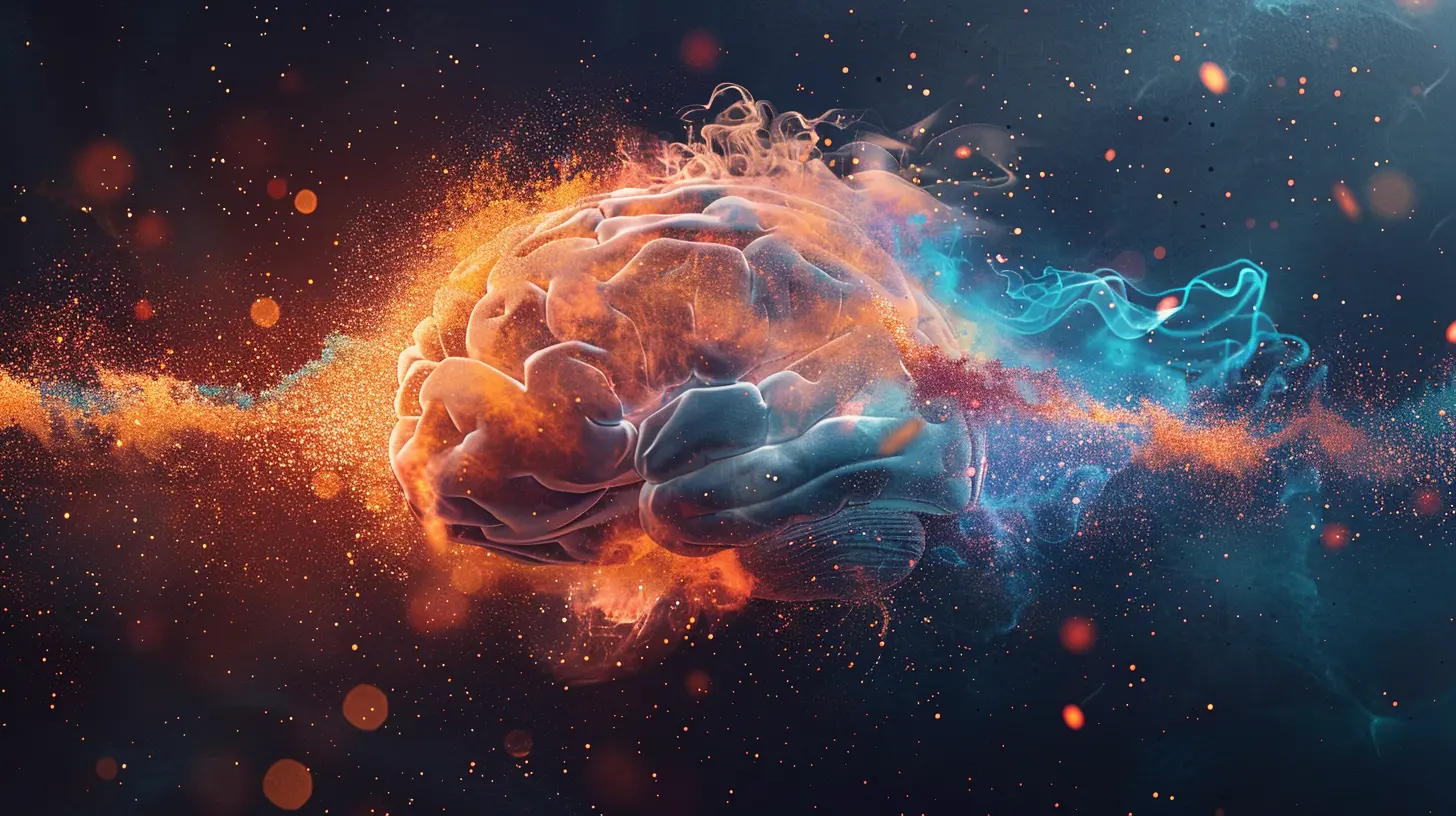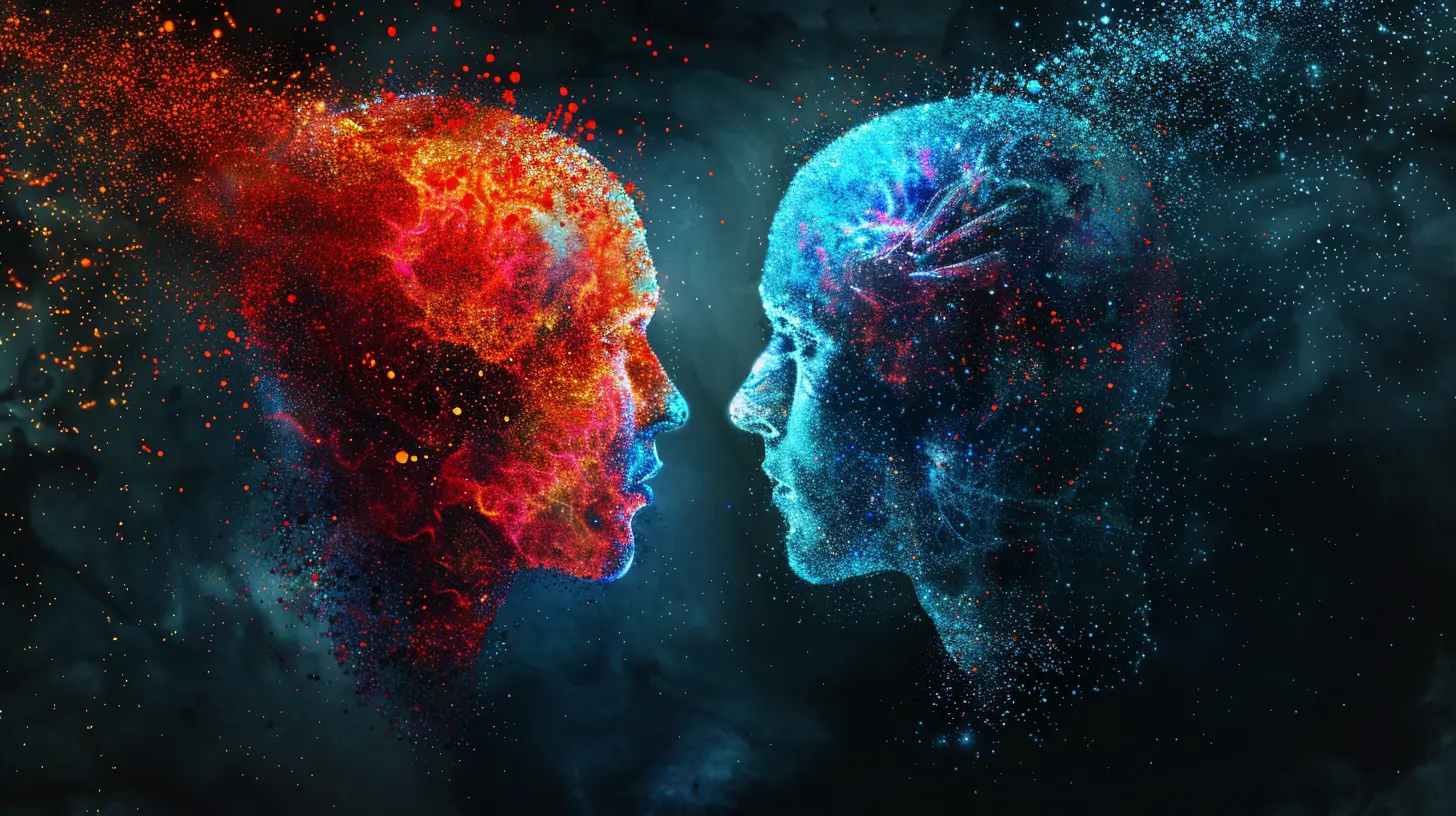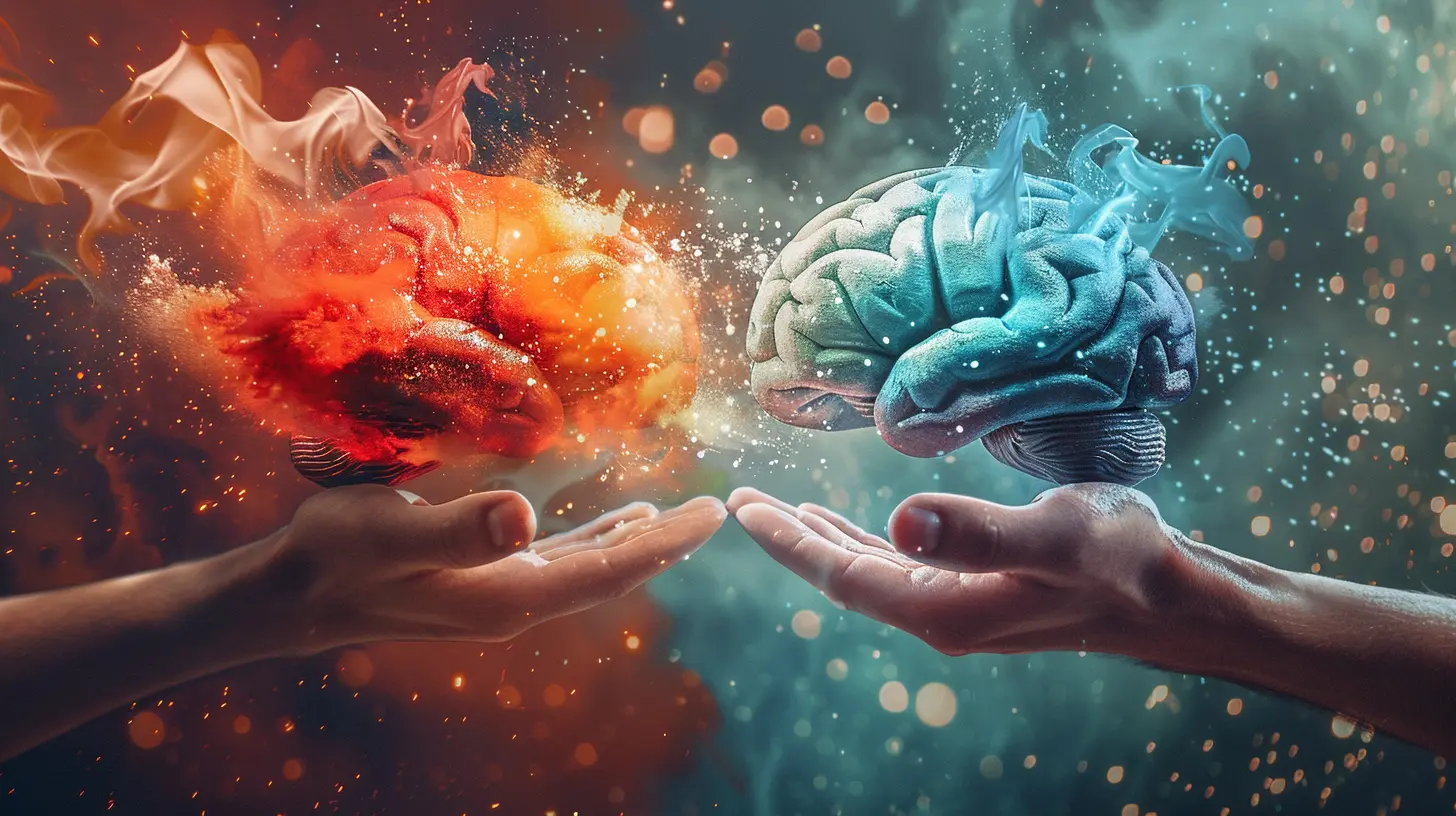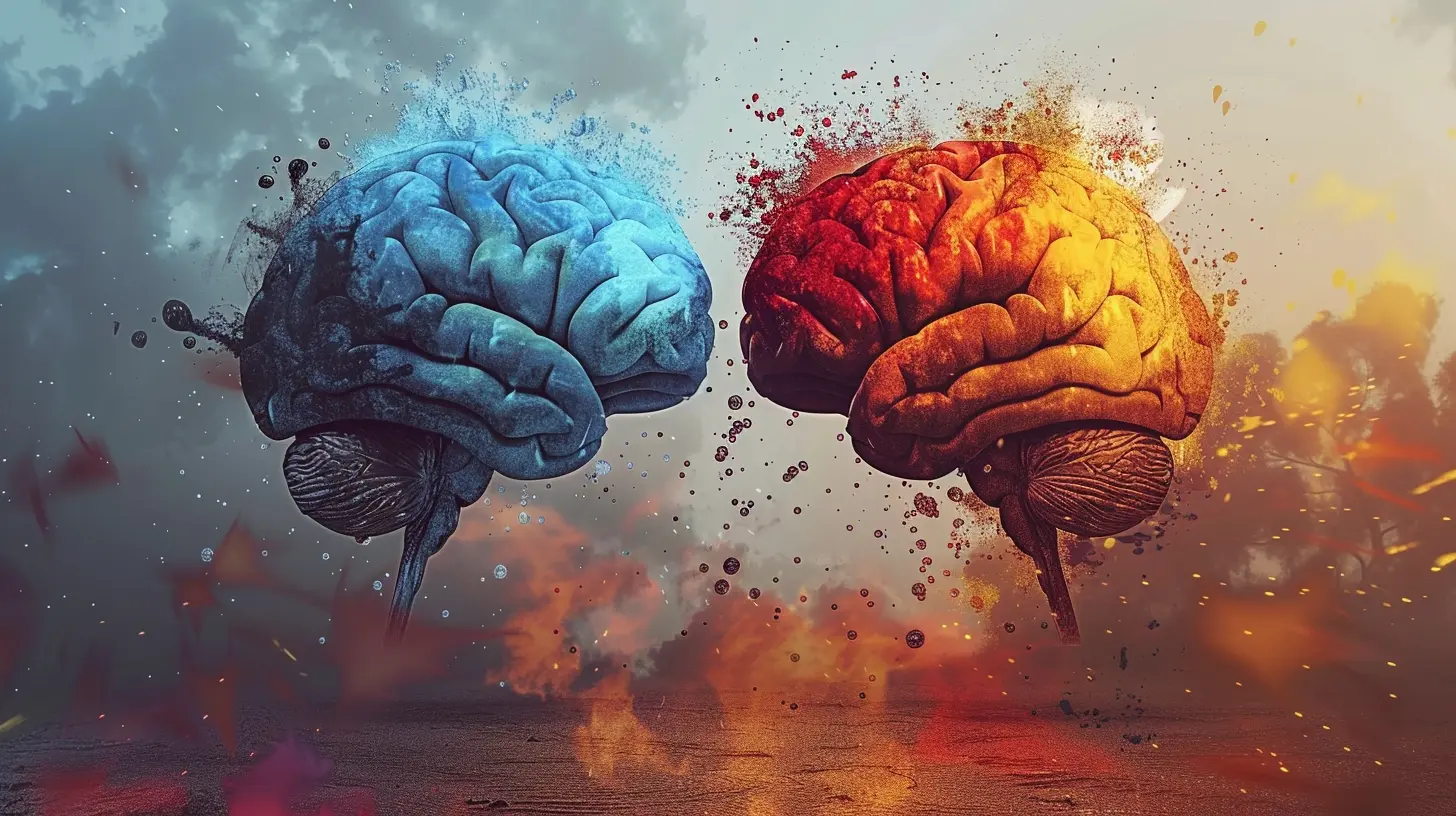The Cognitive Science of Persuasion: How the Mind Is Swayed
15 March 2025
Ever wonder why you suddenly agree to something you initially had no interest in? Or why that one ad just gets you, and you find yourself reaching for your wallet? It’s not magic. It’s not luck. It’s science—cognitive science, to be exact. Persuasion, at its core, is all about understanding how the human mind works and knowing which buttons to push. Intrigued? Let's dive into the cognitive science of persuasion and explore how our minds are swayed in ways we often don’t even realize.

What Exactly Is Persuasion?
Before we get into the nitty-gritty of how our brains are influenced, let’s start with the basics: What is persuasion? At its simplest, persuasion is the act of convincing someone to think, feel, or behave in a certain way. It’s everywhere, from the ads you see online to the conversations you have with friends and family.But here’s the kicker: persuasion isn’t just about changing minds. It’s about guiding minds in a particular direction. And that’s where cognitive science comes into play—understanding how our brains process information can reveal how easily we can be manipulated (yes, manipulated!) into making decisions.
Why Is Cognitive Science Important in Persuasion?
Cognitive science is the study of how we think, learn, and remember. It’s a blend of psychology, neuroscience, and behavioral science. When you understand the cognitive processes behind decision-making, you can better understand why people say "yes" or "no."Think of persuasion as a map, and cognitive science as the GPS system. The GPS (cognitive science) helps you figure out the best route to take to get someone from Point A (their current mindset) to Point B (the choice or action you want them to make).
The Key Cognitive Biases That Shape Our Decisions
Cognitive biases are mental shortcuts that help us make quick decisions. While these shortcuts can be useful, they can also make us vulnerable to persuasion. Let’s break down a few of the most well-studied biases that play a role in how we’re influenced.1. The Anchoring Effect: First Impressions Matter
Ever notice how the first piece of information you receive sets the stage for everything that follows? That’s the anchoring effect. When you encounter something new—whether it’s a price, an idea, or a person—your brain latches onto that initial piece of information like a life raft.For example, if someone tells you a car costs $30,000, and then later offers a “discounted price” of $25,000, you’re more likely to think you’re getting a great deal—even if $25,000 is still overpriced. The initial $30,000 price “anchors” your perception.
Takeaway: First impressions are powerful. People are more likely to be persuaded if the initial information they receive sets the stage for what comes next.
2. The Reciprocity Principle: Give a Little, Get a Lot
Ever feel the urge to return a favor? That’s reciprocity in action. If someone does something nice for you, your brain feels an obligation to return the favor—even if you didn’t ask for it in the first place.Marketers often use this principle by giving something for free, like a sample or a free trial. In return, you feel compelled to buy the product or sign up for a service. It’s almost like they’re planting a little seed of guilt, and the only way to ease it is to reciprocate.
Takeaway: A small gesture can lead to a big return. People are more likely to say “yes” when they feel they owe you something.
3. The Bandwagon Effect: Everybody’s Doing It
Ever find yourself doing something just because everyone else seems to be doing it? That’s the bandwagon effect. Our brains are wired to follow the crowd because, in evolutionary terms, being part of a group meant safety and survival.Social proof—like customer reviews, testimonials, or the number of followers an influencer has—taps into this cognitive bias. When we see others engaging in an activity or endorsing a product, we’re more likely to jump on the bandwagon.
Takeaway: We’re social creatures. If you can show that others are already on board, people will be more likely to follow suit.
4. The Scarcity Principle: The Fear of Missing Out
FOMO (Fear of Missing Out) is real, and it’s driven by the scarcity principle. When something is in limited supply, it becomes more desirable. Think about those “Limited Edition” offers or “Only 3 left in stock!” warnings—our brains interpret scarcity as value.This bias taps into our survival instincts. If resources are limited, we better grab them before someone else does.
Takeaway: Scarcity increases urgency. People are more likely to act quickly when they believe something is in short supply.
5. Confirmation Bias: We Believe What We Want to Believe
Once we form an opinion or belief, our brains start to filter information in a way that supports that belief. This is confirmation bias, and it’s one of the most powerful influences on our decision-making.For instance, if you believe that eating organic is healthier, you’ll seek out articles and studies that support that belief, even if there’s evidence to the contrary. Marketers and persuaders can use confirmation bias by framing their message in a way that aligns with your existing beliefs.
Takeaway: People are more likely to be persuaded if the message validates what they already believe.

The Science of Emotion in Persuasion
While logic plays a role in decision-making, emotion often has the final say. In fact, neuroscientists have found that emotion and decision-making are deeply intertwined. If you want to persuade someone, you need to evoke the right emotions.The Role of Dopamine: The Brain’s Reward System
Dopamine is the “feel-good” chemical in our brains. When we anticipate a reward or experience pleasure, dopamine levels spike, reinforcing behaviors that lead to that reward. Persuasion often works by triggering this reward system—whether through promises of happiness, success, or social approval.For example, advertisements often show people smiling, enjoying life, or achieving their goals. This creates an association between the product and positive emotions, making you more likely to want it.
Takeaway: People are more likely to be persuaded when they associate a product or idea with positive emotions.
Fear and Persuasion: A Double-Edged Sword
Fear is another powerful emotion that can be used in persuasion, but it needs to be handled carefully. Too much fear can backfire by causing people to shut down or tune out. However, a moderate amount of fear—paired with a solution—can be highly effective.Think about public health campaigns that use fear to motivate behavior change, such as anti-smoking ads. They often show the dangers of smoking but also offer a solution: quitting.
Takeaway: Fear can motivate action, but it must be paired with a clear, achievable solution.

The Power of Language and Framing
The way information is presented—or framed—can dramatically impact how it is received. Cognitive scientists have found that small shifts in language can have a big effect on persuasion.Loss Aversion: We Hate Losing More Than We Love Winning
People are more motivated to avoid losses than to achieve gains. This is known as loss aversion. For example, if you tell someone, “You could lose $200 if you don’t do this,” they’re more likely to act than if you say, “You could gain $200 if you do this.”Marketers and persuaders often frame their messages in terms of what you stand to lose if you don’t take action. This taps into our natural aversion to loss.
Takeaway: People are more likely to be persuaded if they feel they have something to lose.
Framing Choices: The Power of Defaults
When given choices, people tend to go with the default option. This is known as the default effect. For example, if a service automatically enrolls you in a subscription unless you opt out, most people will stick with the subscription because it’s the path of least resistance.By setting the desired outcome as the default, persuaders can nudge people in the direction they want.
Takeaway: The way choices are framed can nudge people toward a particular decision, especially if one option is presented as the default.

Practical Tips for Using Persuasion in Everyday Life
Now that you have a deeper understanding of the cognitive science behind persuasion, how can you apply it in your own life? Whether you’re trying to win an argument, close a sale, or simply convince your significant other to watch your favorite show, these tips can help:1. Use Social Proof: Mention how others have benefited from your idea or offer. People are more likely to follow the crowd.
2. Create a Sense of Urgency: Highlight the scarcity of your offer or the limited time available to act.
3. Appeal to Emotion: Don’t just rely on facts and logic. Make your audience feel something, whether it’s excitement, fear, or happiness.
4. Frame Your Message: Focus on what your audience stands to lose if they don’t act, rather than just what they stand to gain.
5. Make It Easy: People are more likely to go with the default or the easiest option. Remove obstacles that might prevent them from saying “yes.”
Conclusion
Persuasion is both an art and a science, deeply rooted in how our brains process information and emotion. By understanding cognitive biases, emotional triggers, and the power of framing, we can become more effective at influencing others—and more aware of how we’re being influenced ourselves.So, next time you find yourself swayed by an ad, a friend’s suggestion, or even a passing thought, take a moment to reflect. You might just be witnessing the cognitive science of persuasion at work.
all images in this post were generated using AI tools
Category:
Cognitive ScienceAuthor:

Christine Carter
Discussion
rate this article
7 comments
Xena Rogers
Persuasion: where logic meets a sprinkle of glitter! Who knew our brains could moonwalk to influence?" 🌟🧠💃
April 7, 2025 at 3:09 AM

Christine Carter
Absolutely! Persuasion beautifully blends logic with emotional appeal, creating a dance of influence that captivates our minds. Thanks for the vibrant insight!" 🌟🧠💃
Carmel Soto
Thank you for this insightful article! It beautifully unravels the complexities of persuasion, highlighting how our minds can be influenced in subtle ways. Understanding these mechanisms not only enriches our knowledge but also empowers us to navigate everyday interactions more thoughtfully.
March 27, 2025 at 4:13 AM

Christine Carter
Thank you for your kind words! I'm glad you found the article insightful and valuable for enhancing your understanding of persuasion.
Jessamine Benton
This article brilliantly illuminates the intricacies of persuasion through a cognitive lens! It's fascinating to see how our minds operate and how understanding these processes can empower effective communication. Great insights!
March 25, 2025 at 3:28 PM

Christine Carter
Thank you for your thoughtful comment! I'm glad you found the article insightful and engaging.
Meagan McFee
This article beautifully captures the intricate dance between cognition and persuasion. It’s a reminder of the power our minds hold in shaping beliefs and connections. Thank you for sharing!
March 23, 2025 at 5:43 PM

Christine Carter
Thank you for your thoughtful comment! I'm glad you found the article insightful.
Chelsea Forbes
Understanding the intricacies of persuasion reveals not just how we influence others, but also how our beliefs and biases shape our perception of truth.
March 22, 2025 at 4:45 AM

Christine Carter
Absolutely! Our beliefs and biases play a crucial role in shaping our perceptions, making understanding persuasion essential for effective communication.
Peyton Hall
This article effectively bridges cognitive science and persuasive communication techniques. Insightful!
March 21, 2025 at 4:18 PM

Christine Carter
Thank you! I'm glad you found the connection between cognitive science and persuasive communication insightful.
Oscar Newton
Thank you for shedding light on this fascinating topic. Understanding the cognitive processes behind persuasion can empower us to communicate more effectively and compassionately.
March 16, 2025 at 3:54 AM

Christine Carter
Thank you for your thoughtful comment! I'm glad you found the insights on persuasion valuable for enhancing communication.
MORE POSTS

Why Standardization Matters in Psychological Testing

How to Create a Depression-Resistant Lifestyle

Can Cognitive Dissonance Drive Personal Growth?

How Social Isolation Affects Mental Health and Behavior

Why Opposites Attract: The Psychological Dynamics of Differences in Love

The Role of Cognitive Dissonance in Cults and Groupthink